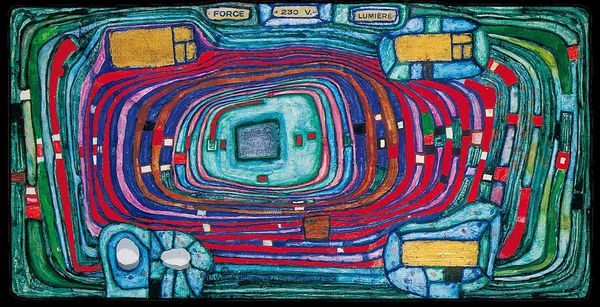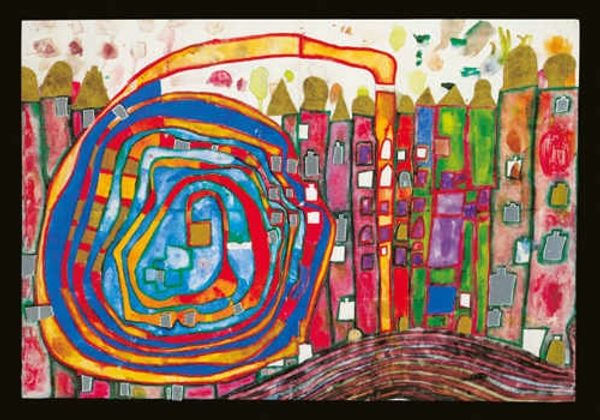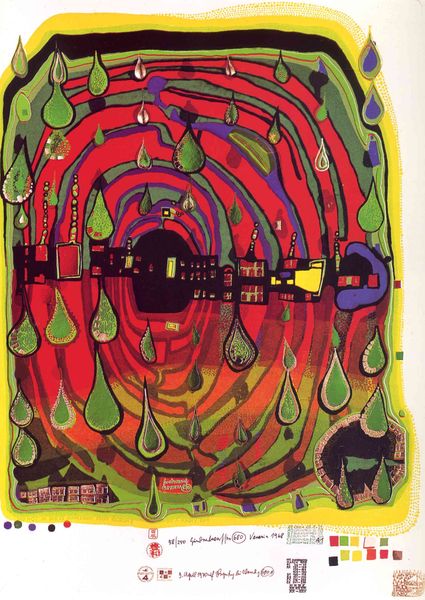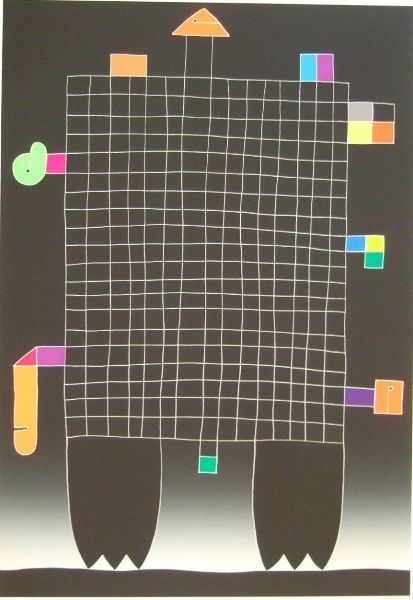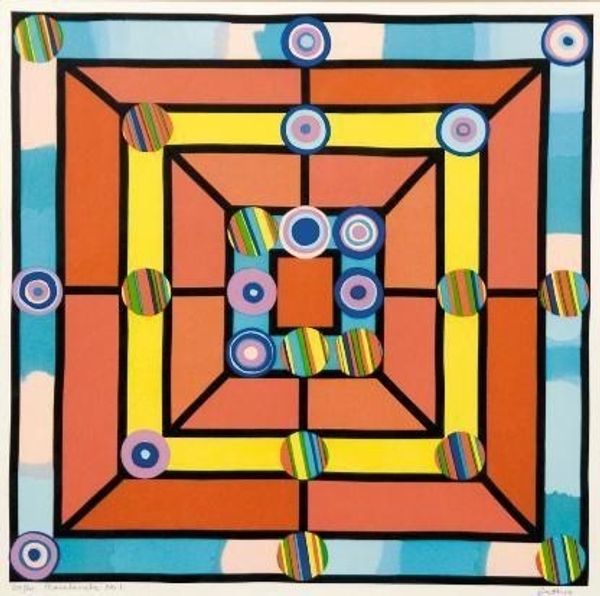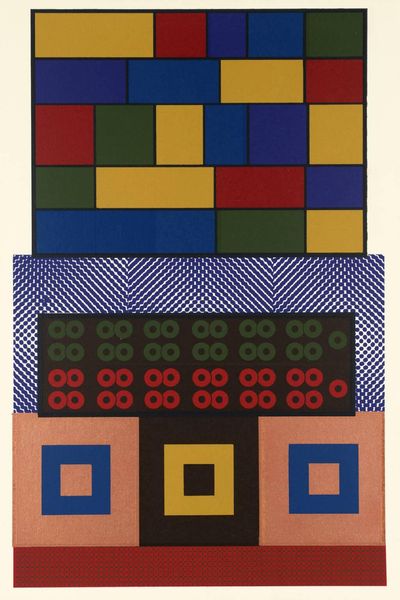
Copyright: NAMIDA AG, Glarus (displayed with the permission of Hundertwasser Non-Profit Foundation) The displayed work of art is protected under the copyright law. In particular, it is not permitted to reproduce, to alter, to print or to publish these works of art. Violations will be prosecuted according to civil and criminal law.
Curator: Looking at Hundertwasser’s "848A Right to Create" from 1986, what are your first thoughts? The piece utilizes mixed media, incorporating acrylic paint to create this vibrant image. Editor: It hits me with a controlled chaos—vibrant colors swirling around what looks like a stylized face, like a mask or a building facade. There's this sense of organized confusion; does that make sense? Curator: Perfectly. Hundertwasser rejected the straight line in architecture and art, believing it was unnatural and dehumanizing. We see that rejection in the wavy lines and the almost organic structure housing the face. It really echoes his architectural designs, like the Hundertwasser House in Vienna. He argued that everyone had a “right to create” and should be free to add to buildings or alter their surroundings. Editor: It feels like a statement against oppressive structures, literally. The title “Right to Create,” along with this face almost embedded within architectural forms, really speaks to issues of autonomy and reclaiming spaces, wouldn't you say? Are there historical precedents that inform his artistic stance here? Curator: Absolutely. Hundertwasser came of age during and after WWII. The trauma of enforced conformity clearly had a profound effect. The “right to create,” then, becomes both a personal artistic motto and a sociopolitical stance against totalitarian control over the built environment. Editor: This perspective adds so much. Seeing it now, the apparent 'chaos' could be interpreted as individual expression pushing back against rigid systems. The buildings look more like they’re organically growing, like a challenge. There is real depth to it. Curator: Indeed. Hundertwasser saw beauty in the imperfect and embraced ornamentation. In a world that continues to standardize and regulate, this piece still invites us to reflect on the importance of individuality and our innate creative potential. Editor: Thinking about this "right," and how difficult it remains for marginalized voices to access and shape cultural spaces, makes me appreciate Hundertwasser’s piece even more. A timely and vital reminder, really.
Comments
No comments
Be the first to comment and join the conversation on the ultimate creative platform.

